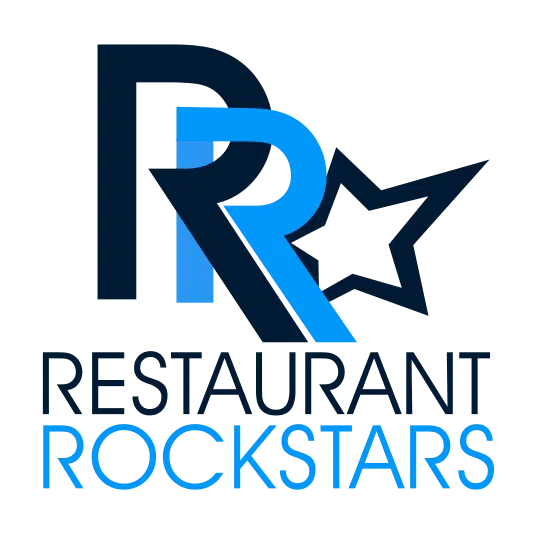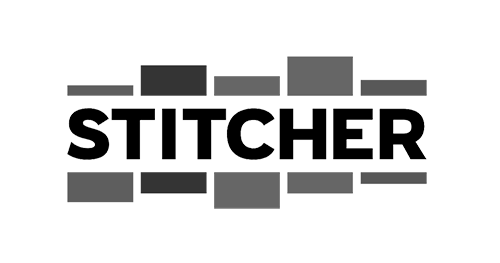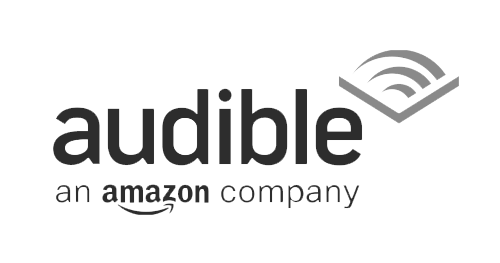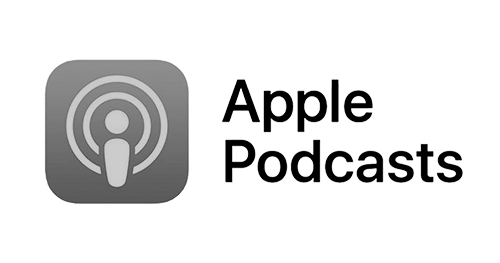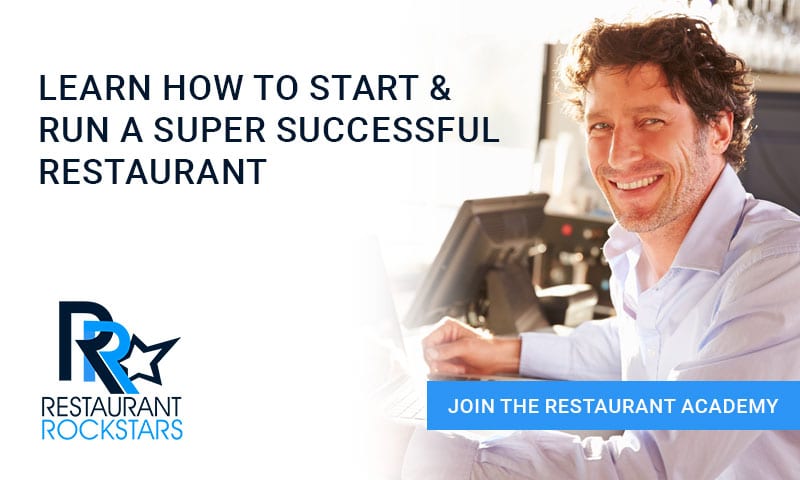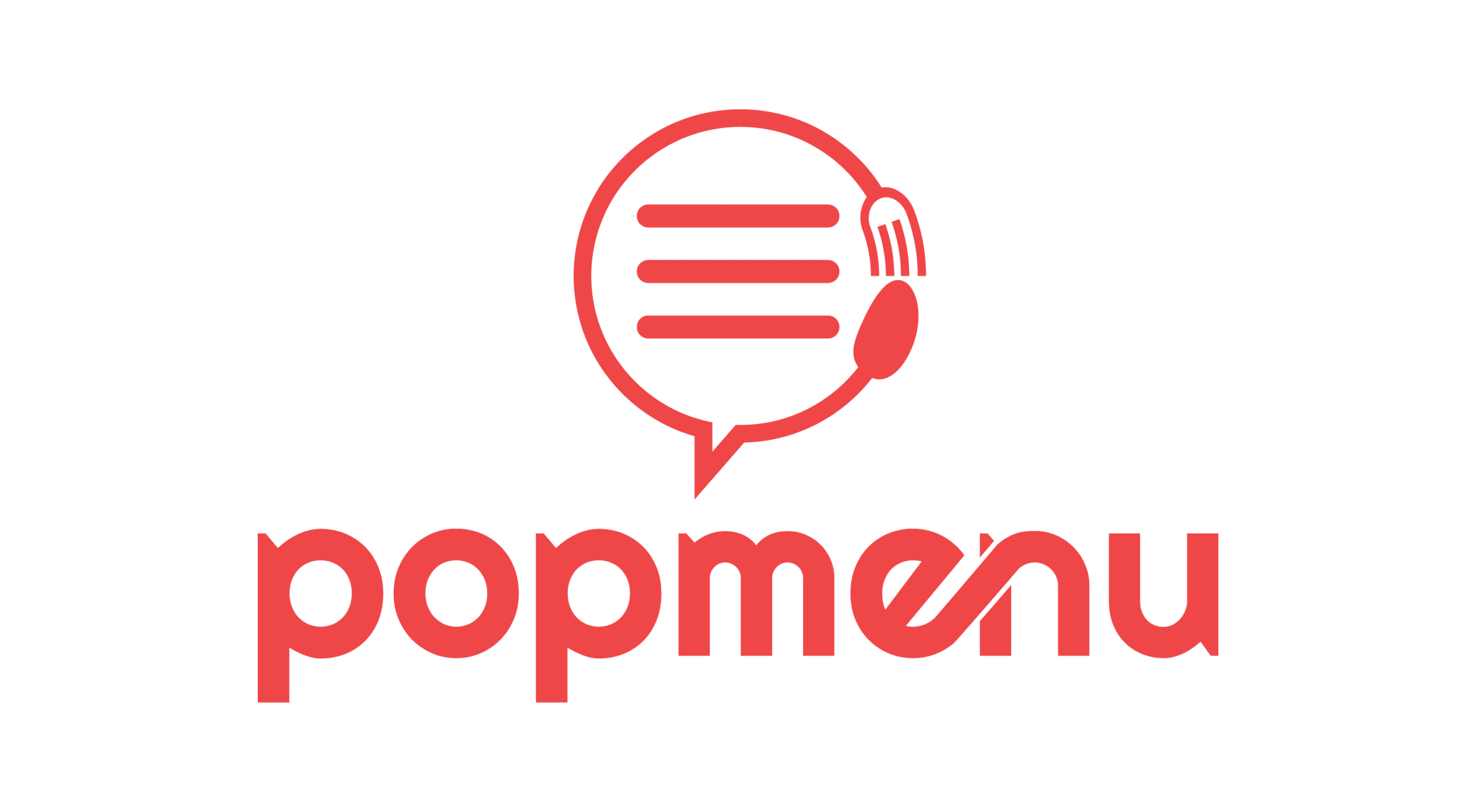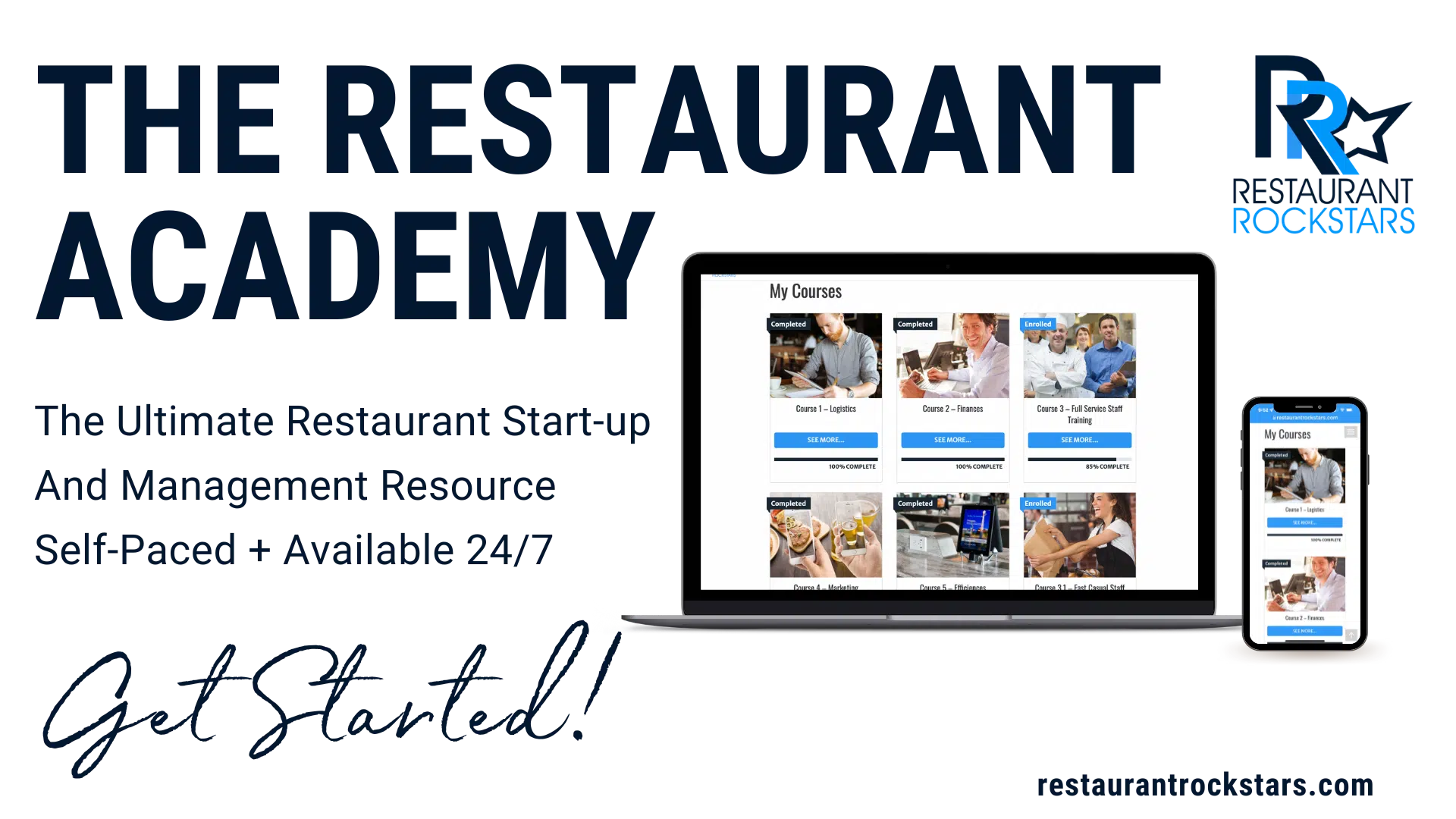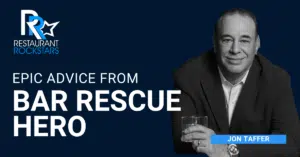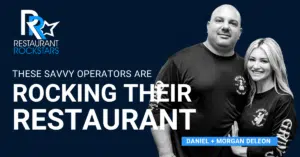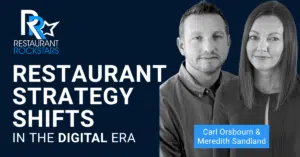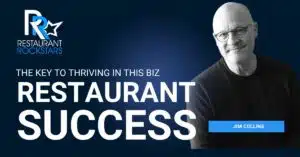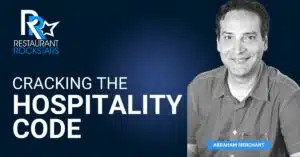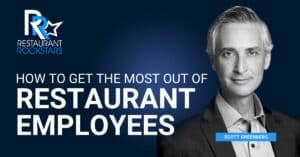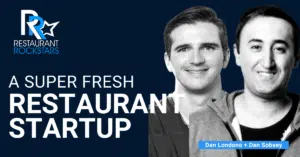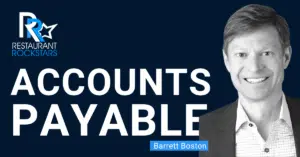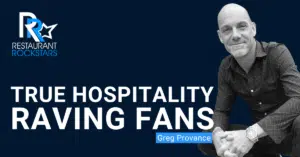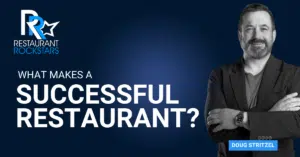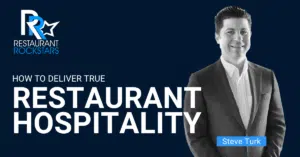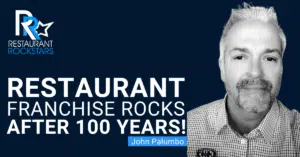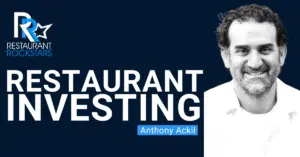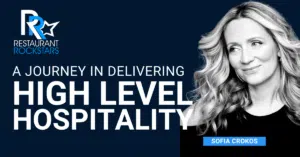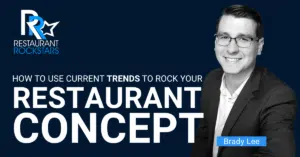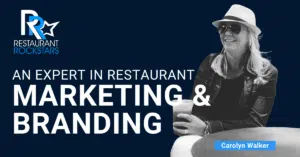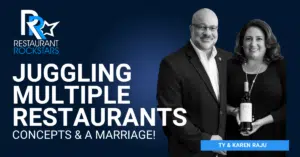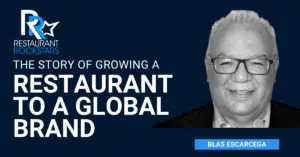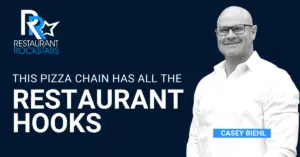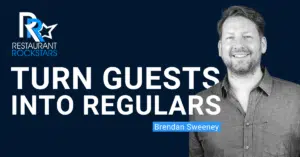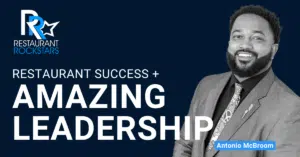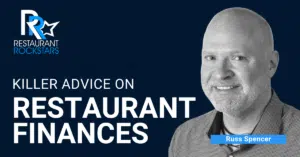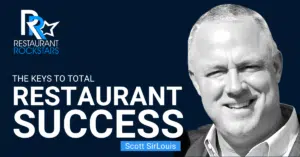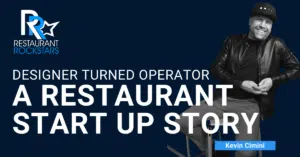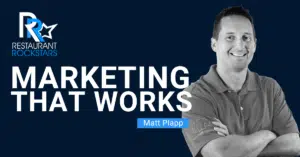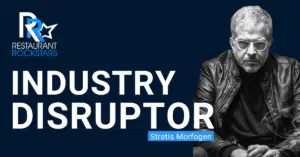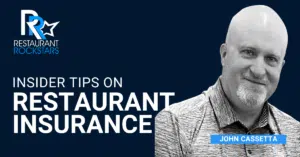Restaurant Rockstars Episode 370
How They Scaled Their Restaurant Brand
LISTEN HERE OR ON YOUR FAVORITE PODCAST PLAYER
Many operators find success with a single restaurant location. Maybe you’re happy running one, but likely you think “if it works here, how about there? And then there!
If you’ve built a solid brand, how big can it really get?
In this episode of the Restaurant Rockstars Podcast, I’m speaking with Josh Luger co-founder of Capital Tacos, a restaurant that started small, built a brand for itself and is now taking the country by storm.
Listen as Josh shares how they scaled their restaurant brand including:
- The early brainchild and vision for his brand
- Early growing pains and challenges of the first few restaurants
- How leadership creates a strong company culture
- Maintaining the “big picture” and systems necessary for restaurant growth
- Important industry trends… the positive and negatives
- Rewards, loyalty programs and marketing that works.
- Secret shopping for consistency
And the key-takeaway… How to scale your small restaurant brand and become the next biggest thing in restaurants.
Don’t miss this episode, then go out there and Rock YOUR Restaurant!
Roger
Connect with Josh and Capital Tacos:
WEBSITE – https://capitaltacos.com
FACEBOOK – https://www.facebook.com/CapitalTacos/
TWITTER – https://twitter.com/CapitalTacos/
INSTAGRAM – https://www.instagram.com/capitaltacos/
People go to restaurants for lots of reasons for fun, celebration, for family, for lifestyle. What the customer doesn’t know is the thousands of details it takes to run a great restaurant. This is a high risk, high fail business. It’s hard to find great staff. Costs are rising and profits are disappearing.
It’s a treacherous road, and smart operators need a professional guide. I’m Roger. I’ve started many highly successful, high profit restaurants I’m passionate about helping other owners and managers not just succeed but knock it out of the park.
Everything from creating high profit menu items and cost controls, to staff training where your teams serve and sell, to marketing hooks, money maximizing tips, and efficiencies across your operation. What does this mean to you? More money to invest in your restaurant. To hire a management team. Time, freedom, and peace of mind.
You don’t just want to run a restaurant. You want to dominate your competition and create a lasting legacy. Join the Academy, and I’ll show you how it’s done.
Welcome back to the podcast. Thanks so much for being with me. Today’s episode is a founder story It’s all about a small brand that came out of Florida and is now taking the country by storm. My guest, Mr. Josh Luger, is the co- founder of Capital Tacos. If you haven’t heard of them, they’re all over the media, they’re all-over social media platforms, and they are growing and growing fast.
We’re going to not only talk about the ins and outs of running restaurants, but most importantly, the growing pains, the challenges of taking your location, your single location from one to two to five to ten to many. Now, everyone may want to grow their business someday and take it beyond that single location.
This is the episode for you. So, stay tuned. Thank you so much to the sponsors this week. And if you want to grow your business, everything you need to know is in the Academy. You can now give access to 25 team members in your business to learn to grow your business.
That’s called empowerment. Now, on with the episode.
You’re tuned in to the Restaurant Rockstars Podcast. Powerful ideas to rock your restaurant. Here’s your host, Roger Beaudoin Rockstars, the busiest time of the year is coming. Is your staff ready for the holiday rush? Well, this year, give your team the gift of Popmenu AI Answering, a simple solution for phones ringing off the hook. AI Answering handles calls 24/7, 365 days a year, so your staff can focus on in person guests.
Customize your greetings and responses. Answer common questions. Promote specials and events and send follow up links to ordering and reservations. AI answering handles it all, while escalating more complex conversations back to your team. Now, never miss another tasty revenue opportunity. Popmenu is the marketing technology platform designed to make growing your restaurant Discover more AI restaurant tools that turn your to do list into an already done list.
Request a demo today and my listeners for a limited time will get $100 off their first month, plus lock in one unchanging monthly rate. Go now to popmenu.com/rockstars. Again, get $100 off your first month at popmenu.com/rockstars.
Hey, Josh, welcome to the show. Thanks for being with me today. How are you?
I’m great. Thanks for having me. I’m really excited to have you here today. It’s really amazing founders and their vision and their growth trajectory and where it all began. So we’re going to cover some ground today, but before we do, where did hospitality start for you and tell us about, how you got into this.
Yeah, I think if I was being very introspective, which I will, because we have a long interview today, I’d say it probably started at home when I was younger, I come from a family with a lot of cooking spent a lot of time in the kitchen with my mom, but I would say professionally speaking I didn’t start my career there.
I started my career in Wall Street in finance did a lot of things in that realm. I did some corporate development, helped build some companies really in the media space. And, a few years into my career, I started working on a side project.
I guess the first foray professionally into the food and beverage space was I started a dining newsletter, so I had a media experience, a passion for food. I said, let me start a New York City where I lived at the time, dining newsletter. I started following the industry there, learning a lot about, all sorts of restaurants and things like that.
My partner and co-founder James had a similar background. He likes to claim he created the first ever ghost kitchen when he was back in college a bunch of years ago. He had a creative idea. He rented out a basement space that had a fryer. He got like leftover chicken from the college cafeteria.
And did something called underground chicken where he cook chicken late at night and then have, folks deliver it to people, but similarly had a career, a wide ranging career and then, we met up and we decided, we want to rekindle that passion for food and beverage and do something in the space ourselves, a little bit more dedicated and take the skills that we had as entrepreneurs at the time and really merge that with becoming restaurateurs. So, a wide ranging turn into the space for us professionally, but ultimately driven by a passion for food and hospitality. That’s always been there.
Excellent story. Thank you so much. What was exactly the brainchild and the vision? For capital tacos let’s talk about that a little bit more.
Where did the idea come from? Was it your idea? Was it James’s idea? Did you just put your heads together and say, Eureka, this is it. We’re going to, do you love tacos? Tell us about, yeah, like I said, the vision and the brainchild for it. That would be really helpful.
Yeah, absolutely. So, there’s actually a guy before us who started.
We got involved very early on, but there’s someone who worked his way up in the restaurant industry and the first capital taco stores 1000 square foot store. It has a sign today. But for the first 5 years, it didn’t, in Land O’ Lakes, Florida in the center with really no other tenants at the time. And. His original vision, I think, was, do something a little bit more creative and higher end in the Tex Mex space.
And I don’t think he necessarily thought well beyond that, but, about a year after he started it, James and I partnered up with him. And I think the vision really crystallized there into kind of, obviously, fast forward seven years, what it’s become, but taking a step back. When James and I started looking at things, we said, there’s a lot of categories in the restaurant and fast casual space, but Tex Mex seemed that one that was to us wide open going back seven or eight years.
Chipotle and Taco Bell certainly validated that there’s an opportunity there, but compared to other spaces, we might have hundreds of burger places, hundreds of pizza places. It seemed like There was room to do something a little bit different, maybe a little bit more higher end, a little bit more creative than what a Chipotle or a Taco Bell does.
And so I think we saw that opportunity, and then we also saw that, Tex Mex is a very interesting space. So, we like to think about the tortilla as a blank canvas. You can do a whole lot with it. So, in terms of creativity and ability to do some fun things with the menu. Combined with the business opportunity.
We thought that was really interesting and what capital tacos was doing when we got involved was something in that space. Obviously need to be refined the vision kind of obviously need to be put through a lens. But I guess the overarching vision was we like to call ourselves as fast casual plus something that might take a little bit longer, have a little bit more complexity to the menu, but create unique flavor profiles of fast casuals weren’t doing in the space.
And I’m helped You don’t push that category along. And I think fast forward, seven years later. I feel that’s more true than ever, right? There’s obviously a lot of folks in the fast, casual tech specs, taco, Mexican space. Now, and folks that are doing different creative things, I’d say we’re unique in certain ways that we can go into, but we saw that opportunity for the space.
We thought it’d be really fun. And I think that thesis has proven itself out over the last seven years.
Okay. That’s very interesting. You mentioned both Taco Bell and Chipotle, obviously well-known brands that are obviously huge. But in my mind, and probably in our guest’s mind, there’s a big difference between those two.
When you think of Taco Bell, you think of fast food, you think of Chipotle, you think about a little bit more upscale. It’s the food looks fresh and you’re watching the people make your bowl or your burrito or whatever you look for. Are you somewhere in the middle? Are you more like Chipotle?
Because this is scratch made food. And I want to get into that a little bit more, which I guess follows a little bit of Chipotle’s model, but let’s talk about. Fast, casual versus fast food. And I think you’re differentiating yourself from and moving away from any conception that it’s fast food.
You said it’s a, it takes a little longer and that’s the scratch made thing. So, there’s a quality element there versus a commodity element there.
Right. 100%. So yeah, the way I view it is like historically, it’s like Taco Bell came along and that’s from a fast-food perspective, validated Mexican Chipotle did that I think as a fast casual level.
I view us as a continuation of that, as I said, the fast casual plus, right? Yes. It’s beyond. Yeah, it’s beyond that. It means, we’re making everything in day from homemade recipes. We work with a dozen different proteins. We grill everything to order. So, it’s really quite different.
So, it’s not. Chipotle, you go down a line, their proteins are sitting in a steam well, and you’re saying, hey, give me sour cream, give me cheese, give me this or that. Capital Tacos, we’re the chefs. Doesn’t mean you can’t say, hey, take that out or add this. But you’re coming in and getting flavor profiles out of six or seven or eight different ingredients, getting a much wide ranging, much more wide-ranging menu in terms of what’s offered to you.
And if, look, if you don’t want onions on something that has onions, you can take it off. But the idea is that we create unique flavor profiles and we’re actually making them to order like, a sit-down restaurant would do. So that’s why I say we’re fast casual-plus, it’s a continuation building.
And if you talk to folks who. And we have, who went to the early Chipotle’s in the Denver area. They’re obviously quite different when you have 2000 stores and they talk about something that was similar to that in some extent, it was a much different kind of process back then. So, in some ways it’s going back to the roots of where Chipotle was built and building that out in terms of flavors and making that model scalable as opposed to going to, that kind of cookie cutter, fast, casual model, where you just go down a line and pick things out.
All right.
Let’s talk about how long does it take, say for someone to see the board? And figure out what they want and place the order. And then are you watching it being made? And when you say it takes a little bit longer because of the quality that goes into it and its scratch made, and it’s almost like a full serve restaurant type thing, but it still doesn’t take you 20 or 25 minutes to get your meal once you order clearly, because it’s still fast casual.
So, explain a little bit about how that works.
Yeah, absolutely. I think the first thing depends on if it’s your first time at the store. My recommendation when I’m in the store and someone comes in for the first time or it’s a new store opening is, I ask them, take a few minutes with the menu.
Take five to ten minutes. The first thing that we write on our menu is, at Capital Tacos, we do things a little differently. Take a few minutes, read what the menu’s about, ask questions, it’s on the menu. There’s a whole range of opportunities. One of our themes with our menu is inclusivity.
We want to have something for everyone. So, whether it’s a dietary preference, whether you like one protein, specifically, whether you want tacos, burritos, bowls, nachos, fries, it really is something for everyone. So, you got to take those few minutes. And I think that’s important to truly understand what we offer.
And I think that’s exciting again for us, obviously there’s a balance. You don’t want to overcomplicate things and have people sit there for an hour and feel like they got to take a test to know what you have. But it’s nice to be able to walk into a place and say, Hey, there’s more than two or three or four options.
And actually, I got to look at this and see what do I really want. This is a lot of things I might want. So, I think that’s the first step. In terms of ordering itself, obviously very simple. One of the things that we spent a lot of time doing before we on this, on this growth path is invest in our systems whether it’s front end, making the POS very simple for our folks to take orders.
And of course, the backend making it simple for folks to take to make the orders and get them out in a good amount of. In a fast, efficient amount of time. Our target is under 10-minute ticket times all the time. And obviously, that’s on us to understand what our business flow is and staff every year during busier times, of course.
But we’ve done a lot of work to be able to execute that and not cut corners in terms of the quality of the food and making sure that you’re still getting it off a grill, hot off a grill and getting that taste. And when you see other fast casuals do is. Not to focus on Chipotle but because they’re a busy, successful, fast casual.
It’s a good example. They’ll have folks wait 15, 20 minutes in line. Of course, when you go down the line, it’s instantly made, right? Sure.
But there is a line that you’re waiting in. So that’s the way they deal with the flow. Yeah. Because you can come up, place the order. You might be waiting 10 minutes.
That’s why we’re also clear. Hey, you can order chips in case. So, here’s what you can order while you wait. And you’ll be waiting a few minutes, but instead of standing in line, you’re sitting at your table waiting for your food to come off a grill. The net wait time should be effectively the same, but the difference is, the net time between when you step foot in the door and when you get your food is the same.
It’s just a question of whether you’re standing in line or sitting at your table waiting for your food, but the difference is in terms of quality, right? Instead of going down a line and getting food out of a steamer, you’re going to get fresh off a grill. That’s a big difference for us, and it’s a key difference.
And to your question, a really good one about, can people see it? Yeah, we, we work with second generation restaurants, so each one’s a little different, but the commonality between all of them, literally, except for one is there’s a fully open kitchen, so it’s important to us from what’s on the wall.
The first time I walked into a capital tacos, I want to be like what everyone else is. You could see something different going on there. You could smell something. You could hear something. It’s a live show, right? And folks can see is that they’re waiting seven or eight minutes for their food. They can see why they can see it being made.
Yeah. It’s entertainment. It’s I think it’s interesting to watch. I’ve always thought so, open line kitchens are still very entertaining. And it, it is a buffer between people waiting because they’re watching the action and it’s an interactive experience. So, I would agree with you there.
Absolutely. Yeah. That’s very cool. So, let’s talk about the vibe of the store. Now I walk into a typical, Capital Tacos, is it absolutely rock solid consistent among all your stores? Is there any sort of community emphasis in different stores? But what are the sights and the sounds and the smells of a typical store walking through as a very first-time visitor?
Because you’re creating impressions and that’s very important, but you’re also bringing the brand to life at the same time. Let’s
talk about all that. Absolutely. And, I’d say we take our approach to that as a little bit different there as well. Working backwards, we have, as I said, a second-generation restaurant approach, which is goes back to the DNA of our restaurants.
We go. We mostly go into other where other restaurants have failed was existing infrastructure. Excellent. And we could open for a fraction of the cost and a fraction of the time. So smart, common branding elements. There’s a lot of commonalities. You’ll see between stores again, open kitchens. A lot of the colors on the wall.
A lot of the branding elements tell folks who we are and what we’re about. So a long way of saying that each capital tacos has a lot of similarities, but each one is a little different. We actually like that because going to your point about community, part of what I like to do is localize each location, whether it’s corporate or franchise owned, is pay homage to that local community and might be news articles from that community might be events that we’ve, weddings that we’ve pictures of weddings that we’ve catered for school events that we’ve catered for, basically, we like to view our restaurant walls as living, breathing elements of the community.
And we allow for that as well. So, the commonality is going to be. You’re going to hear and see and smell the same type of open kitchen. You’re going to have some common branding elements that are, some are funky, and some are weird, and some are just instructive and informative across the stores, but the layout for all is going to be a little bit different.
And especially as we lead them with franchisees, we tell them, look, we want your history on that wall. So, one of our franchisees is a Navy veteran. So, he wants to take one of his walls and have it. He has a huge anchor there. And every veteran that comes in signs the wall and gets to, we’ll give all veterans a discount.
So, like his homage to his history. So nice. Yep. We like that. And then I’d say the other common element of our stores that we think is really important and going back to inclusivity, one of the things with Mexican or Tex Mex we found is that it could be somewhat limiting.
It’s not naturally a very friendly kind of kid’s place.
It’s not necessarily the most inviting place for family. So, we made a very large effort both on our menu side. We break kid’s meals and say everything from salads to bowls to tacos to make something that’s inclusive. But from a store element standpoint, our stores all have. Big chalkboard walls, we give chalkboard out, the chalk out to kids so they can draw and color on the walls.
We have free retro pinball machines so kids can play with their parents. We want it to be a place where families kids can have fun and families can have something to keep the kids entertained while they eat at our restaurant. So those are the kind of common features of our stores.
So, what’s a typical square footage of a store?
So, it ranges, I said, with second gen, typically we can go as low as, 1800 to 2000. For a full version, we have obviously smaller stores than that, that have no seats, but what we recommend is basically anywhere from 18, 2000 up to the high twos.
We don’t necessarily need all that space, but if we find a good second generation that has that much space, we’ll go for it. And we like to, most of our stores have outdoor patios as well. So that’s the size and look and feel that we go for it. Great.
Great. All right.
That’s fantastic. Let’s talk about branding and the consistency of the brand. First of all, what does the name mean and how does it relate to the product itself? When someone says Capital Tacos and they’ve heard it for the very first time, is there some sort of a connection? Because you started in Tampa, Florida, and now you’re expanding out in the Southeast and you’ve got larger growth plans but tell us what the name means and how it relates to your brand.
Yeah, it’s a great question that we get a lot. And I’d say is it just relates to our ambition, right? So, when we talk about capital, it makes a statement and you we want to be whether it’s the capital of a community or the capital of Tex Mex in a community. We want to, make a point that we do things with emphasis, and we want this to be a place that folks talk very highly about and say, hey, that’s the best Tex Mex I ever had.
Or that’s, the restaurant where I have the most fun going to it’s we put a C with an exclamation point next to it. And so, it’s really about. Everything we do from trying to provide a fun time to trying to provide the best most inventive tex-mex out there really try to capitalize it and underline that’s our ambition, right?
And that’s what the name means. I think people spell it sometimes with an O, sometimes with an A. It’s okay. But I think it makes that kind of initial first impression.
Okay, that’s great. Let’s talk about, take us back to the very beginning, and did you know that you wanted to create a franchise right from the get-go?
Did that evolve after a while? Did you open so many companies stores first, and then you suddenly said, oh, let’s get into franchising? And what’s the differentiation? Because there are company owned stores, there are franchised, obviously, operated stores. Let’s talk about that.
Yeah, that’s a great question.
What I’d say is we’ve been blessed to, I think by virtue of both being in Florida, but also having concept from day one, got national recognition, had a lot of folks coming to us from across the country, right? Coming to our stores and messaging us saying, Hey, there’s, there’s nothing like this in Michigan.
There’s nothing like this here. Yeah. And but what we knew is we had to take the time to, but our ambition was always to do something special with Capital Tacos and there’s nothing wrong with having a few restaurants in one chain, but my partner and I have been up front with our team. The ambition is to do something large across markets across the country, but we always made it clear.
It’s not necessarily about speed, right? It’s about we’d rather have 50 of the best restaurants serving the best Tex Mex around than 500 restaurants serving mediocre food, even if those stores are making more money. We made the commitment to our team that we wanted to grow, but we want to do it, on a path where we felt like, hey, we got to figure out all these pieces before we do that.
And that’s why we’ve taken about seven years to get to the point where we’re comfortable going to folks, we’ve had folks come to us and say, I want to take this state. I want to take this territory. And we said, we’re not ready for it. We built our systems, our processes, right size, our menu, developed our marketing and our brand to get to the point where we know we could talk with entrepreneurs who want to bring it to their hometown so we could help them be successful.
So, as it relates to corporate. Versus franchise, we always knew I’d say that we wanted to get there, but we also knew that we didn’t want to be one of those franchisors. It says, look, we got one store in one market and we’re going to go, take someone else’s money and have them learn off their own money.
We said, look, we want to scale in one market. We want to understand the challenges that go along with that and solve that. And this year we’re also saying, look, we’re going to other markets. We’re taking this outside our home market where our brand isn’t known and doing the hard work of planting a flag and saying, look, we got something different.
We have enough confidence to go to other markets, build out the marketing, get to know communities and show them what we have and learn from that. And build brand around that and operational prowess in these markets around that. Now we’re at the point where, we closed franchise deals in multiple different states, and we’re talking with a bunch of other folks, they can see that we’re not just talking to talk.
We’re walking the walk. We’ve taken the time to build the systems out to build the program out, and we’ve also said, look, we’re putting our skin in the game and saying, we’re willing to take this on the road as well. So, I think as we go forward, obviously, the hope is that we have corporate stores now opened an opening across, Atlanta, Charlotte, South Florida, Orlando, and Tampa.
We want a lot of that growth to be obviously in the future, come from the franchising side, but we thought having a skin in the game and taking the time to get there for franchisees was the right way to do it.
I think that’s a really strong message that you just delivered because there are definitely concepts that start and maybe they’re an overnight success and then suddenly says, Oh, I can make a zillion dollars by suddenly franchising this concept.
And people buy into the idea because of that initial success, yet the systems aren’t in place. And it’s so important to have everything dialed so that you can scale a business because the last thing you want as a franchisor is to have your franchisees get all jazzed about it, and then there’s suddenly failing.
You got failures as part of your reputation versus the success because everything was thought through you, you could see around corners, and you gave them all the tools to run a super effective business. Whether they had prior experience or not. It’s a system follow the system and you can be successful.
So, you guys obviously thought that through, but with that said, here’s the question. Can you go back to the very beginning and how you grew from one store to two to 10, perhaps, and then what some of the biggest challenges were that you had to overcome? Some of those pain points you thought, oh my gosh, how are we going to get over this hurdle?
I’m sure you got a whole bunch of stories. That would take probably a whole series of interviews to go through that. But there was a couple of examples. Yeah, for sure. Look, I think, coming into this industry, as I said, not as a lifelong restaurateur, part of what you try to do is, get a lot of information on the outside and talk to a lot of people, learn as quickly as possible.
And one of the rule of thumbs people, gave us early on was the restaurant industry. Every time you triple in size, it’s like rebuilding your company. And so that means from one to three, three to six, sorry, three to nine, and now from nine to 27, and you always want to be ahead of that curve.
And yeah, absolutely. I could tell you like the first day we walked into the stores, and we said, Hey, we want to learn. I’ll give you, the biggest potential, one of the biggest examples. How do we learn how to, we want to go in the back, we want to start prepping some of the recipes.
Okay you’re standing there, okay, but where’s your recipe book, and there’s one stained sheet over here with recipe A in this way, and then recipe A over here, another stained sheet with a different recipe. We want to go on the line and make a taco. Okay where’s the screen, the kitchen display system that tells me what to make?
Oh, it doesn’t actually have the ingredients. So how does someone know how to make a taco? Oh, you got to memorize the menu. Okay. How long does that take? About six months. Those kinds of things where we said, okay, we must come in here and what my partner and I did is built a custom POS system, custom kitchen display system.
We now have recipes and a platform called Meez is where every single step of every single recipe is listed out as pictures has video. So just from a systems perspective, right? Making sure your team can make the food, knowing how they make the recipes, make it consistent if you update. One step of one recipe.
How does that get distributed chain wide? So, spending a lot of time on the systems to make sure an individual restaurant works. Same thing with the menu, right? What you can do with the menu. You have your original team of rock stars going versus when you’re having it against five or 10 teams, you have to train new people every day or, as you said, bringing in franchisees that don’t have restaurant experience.
Going through every single recipe, going through every single step, going through what the menu is from top to bottom, the systems that enable folks to make the recipes. Make the food. We’ve had a consistently reinvent those. And then also, I’d add, as I said, it’s a living, breathing process.
It’s not something that ends. And I think the only thing about the restaurant industry is tip of the spear, right? You’re always on the cutting edge of technology and efficiencies and new platforms come along. And so, it’s a constant reevaluation. But I think the most important thing, as you said, this really goes down to the systems. We believe systems weren’t run restaurants and people run the systems that run the restaurants. And anyway, we could find a way to make our team’s lives easier via systems, make our, our operations more efficient, more consistent. You basically have to keep doing that.
And we’ve certainly invested a lot of time and effort in doing that. If you came back to our original stores, you’d see again, you have some amazing folks there who are making stuff from memory and doing things really fast. But we knew that wasn’t going to scale. And so those are a few, key examples that we’ve taken all the way through to the restaurants today.
Yeah, I get the sense that you really thought about everything in advance, even though you can’t think of everything. Cause I always say this is the business of a thousand details and it’s probably a business of 10, 000 details, but it’s you gotta have all those things dialed because the things that you miss are what the guests will see.
And that’s a negative impression. And especially when you’re training a new franchisee, it’s there’s so many elements that go into creating a successful store that people say, wow, that was an amazing experience. And the food was great. And the service was great. And the vibe is cool. And now this is a place I want to come back to.
And that leads to social media and all those other kinds of stuff. But you also have your finger on the pulse of trends and innovations. And I think the key lesson here is you always, you got to know what the competition is doing, but you got to play your best game and stay ahead of the competition, but you can’t just sit back and say, Oh, we’re a success.
And then the competition runs right over you. So, let’s talk about trends and innovations. And are those two the same? Cause to me, a trend is something that isn’t necessarily lasting, but it might be a quick flash in the pan that gives you a little boost forward. And maybe it’s an innovation. I don’t want to speak for you, but let’s talk about trends and innovations and the importance of that and what it’s done for your business.
Yeah. It’s, it’s a great. Great point. I think, look, again, one of the things we say is we have the most inventive tex mex out there, but that’s a mission that doesn’t end. And so, we’re very cognizant to say, look we are constantly scouring what other folks are doing and even if we think we do things well or better.
Great. But if we see someone else doing something interesting, we’re certainly willing to learn from them. We’re certainly want to say, okay, how do we apply something like that? How does that spark creativity? And ingenuity on our side, right? So, like we don’t say we have a menu and that menu sits because you can’t act that way.
And again, that’s a great thing about having a scratch kitchen and having that in our culture. A lot of our best menu innovations, some of them come from my partner, a lot of them who come from our team who are working in scratch kitchens who say, hey, I did this and this with the stuff that we have in our kitchen today.
What do you think about that? And then we say that sparks an idea with us. And so, when you have that process and that culture, I’d say that’s a good question of a good example of a trend, right? There might be. Things that are happening in tacos, in social media, like birria tacos, a great example, right?
That started becoming this huge trend a few years ago, and what we typically do is we don’t like, so you jump on a trend in the first second because, we’re more thoughtful than that, but we want to make sure it’s staying power. Okay, that’s staying power. Then we sat down and said, hey, how do we make this work for us?
You don’t see a lot of fast casuals serving birria tacos. You don’t see chains like Chipotle doing it. There’s a lot of reasons why. We have more of a scratch question. We could do it, but we had to come up with what’s our process. What’s our take on it? How do we make it in a way that it is scalable and sustainable?
We launched it as a special last November under a different name. Did well. We worked through the process and this March we added it to our menu under the Birria name. That’s become the highest grossing product that we’ve had, but that came out two years after birria became a thing. There are trends you might want to jump on, but the way we’ve look at trends is we want to see what’s going on, but then we want to say capitalize it.
What’s our version of it that we can work into a system, and we might take our time doing that, right? So, I view that as the trend side. Innovation side. Yeah, you’re right. It’s a little bit different. I view that through probably the lens of technology. And just broader consumer behavior.
Covid. It obviously is a good marking point there. We and I’d say many other brands went from digital revenue being maybe single digits, maybe low double digits to being a majority of revenue overnight to sustaining now into, 30 40 percent of our business, right? So, the technology, the expectation of consumers there as to how can how I can order conveniently online, how I get rewarded for doing that.
How I pick up my order. Those things change. Those were innovations and, part of those things are okay. Now, technology sometimes takes time. You gotta find the right partners. You gotta integrate it with your systems. You can’t change that overnight, even if you want to but there’s some things that you look at.
You say, clearly this is a market change in how consumers are going to behave. If you don’t have a good app, if you don’t have good online ordering, if your online ordering is not integrated with your kitchen display system, you’re just not going to be able to compete. And some of those things you have to be able to jump on and have the intuition to say, okay, this is a real permanent change.
We need to invest the time and money to upgrade our technology. Cause if we don’t in two years or a year, people will be ordering with someone else simply because it’s more convenient, not because the food is any better. So, you’re definitely right. Trends and innovation are two separate things.
You gotta be monitoring them both. And ultimately, it’s a question of, what you think is necessary for your concept and how you can most effectively integrate it within your concept.
Let’s peel that back just a little bit more now. You obviously stay ahead of trends and innovations. You don’t jump at the first thing even though it might be intriguing.
You let someone else test the waters. But there’s a wide variety that we as operators stay on top of what’s happening in our industry. A lot of people go to the National Restaurant Association show where you literally see in person. See everything emerging trends, innovations, stuff with staying power, something that might not last.
The industry trades, it’s like we stay on top of our industry. What do you see as being, positive trends that might have staying power and let’s talk about anything that you see as negative for this industry that you don’t necessarily believe in. And this is all opinion based, of course, but I’m just curious, what do you think is a really positive trend or innovation and what do you think might be negative that you wish didn’t happen or doesn’t last?
If that’s easy to answer?
It’s a good question. It makes me think. Yeah. Okay. Thanks. Yeah, I think, from a positive standpoint, I think what I was talking about, it’s, I think it’s good to think in terms of convenience for the customers, right? I think that the world we operate now and as people expect things with a click of a button and traditionally, we all growing up, right?
I’m probably nostalgic for you call your restaurant, they recognize your name and say, hey, do you want the, Thank you. But that’s gone by the wayside. A lot of times now it’s hard to even find restaurants will pick up the phone. This is true.
And there’s automated phone answering now.
And that’s a trend but keep going. I don’t mean to interrupt you.
No
Go ahead.
And people could order on Uber and Door Dash. So, I think, ultimately, we’re in a world now where convenience is king. And there’s no reason restaurants have to be behind there and can’t be ahead.
And so, I think COVID, I think really pushed the restaurant industry to be able to compete at that level. And now it’s not necessarily easy to, and that isn’t static, right? Cause there’s tons of providers out there offering online ordering services, POS services, integration services. I think that’s a positive because it’s pushed the restaurant industry.
And I think now really at scale, you don’t have to be, again, a few years ago, it used to be, you had to be a big restaurant chain to invest in this technology. Probably had to develop an app at a very high cost. This stuff has been commoditized to a point, not to say there aren’t differences in quality, but a mom-and-pop restaurant now has access to be able to be as convenient, I don’t say get up.
Not 100 percent as convenient as McDonald’s app or hopefully capital tacos app, but pretty damn close. And so, I think that’s good for the industry because it’s has leveled the playing field. It’s allowed folks to say, hey, look, I don’t need to go to a third-party platform to get convenience and ordering.
And I also don’t have to be a 500-store restaurant chain field to offer convenience to my customers. So, I think that’s a good, development. And the way I like to look at is people can choose, their own path. So, if you want to order on an app and order ahead, you want to order online, you want to order on delivery.
My approach is I gotta, I want to be best in class at everything. If someone wants to come into our restaurant, like we’re talking about earlier, I have to give them a reason to come into the physical restaurant. I think grilled to order food, fresh off the grill, a fun environment where you have things you can do and have fun and play with is a good reason.
I know some people want to sit on the couch and just order in. So, I want them to have a great online menu and a good ordering experience there as well. I think restaurants have been pushed in the future the last few years in that way. And I think that’s a trend that’s obviously not going to go backwards.
I think that’s positive.
Listen, from one restaurateur to another, and I hope you GMs out there listening as well are paying attention, you know, marketing should never be an experiment. Oh, I tried this, or I tried that. No, any of your valuable dollars that you spend on marketing should absolutely be trackable. You should know exactly who you are.
Where the business is coming from and that it’s driving return on your investment. You spend a certain amount of money. You want to make far more money in return from that marketing if you can track it. So, pay attention. My friend Dyson runs a business called the Birthday Club and his program is done for you because we know that everybody dines out on their birthday.
It’s a tradition. It’s a celebration. But not only do they not come in by themselves, they bring many friends with them. They usually have free spending and large check averages. It’s very profitable business. So why leave it to chance? Why let your competitors get all the birthday business? So again, the birthday club is a done-for-you program.
All you have to do is check out www.jointhebirthdayclub.com/birthdayrockstar. It’s a great program. If I still owned and operated restaurants today after decades, it’s something I would definitely be doing, but it’s worth checking out. So, check it out. www.jointhebirthdayclub.com/birthdayrockstar.
I think one of the things right now that’s, a very open question in the industry, um, I would say something that has to do with very specific is just talking about something like kiosks, right? And this is where you could get convenience goes too far, but this really is out of the realm of convenience because to be clear, kiosks I don’t think it’s solving a customer problem.
I think it’s solving a restaurant problem, which is labor costs. And obviously, we’re keenly aware of, the rising costs on food and labor. And of course, customers want prices to stay down and want hospitality to stay up. But restaurants obviously have to operate in a sustainable way. And kiosks are one of those things where a lot of people rush towards them.
And I remember going to the first Shake Shack in New York City. It was all kiosks. And they had 30 kiosks, but they also had… 30 people helping people order with the kiosk. So, the net effect was zero. And so, I think what you’ve seen is a lot of people pause, on kiosks. You’ve seen a lot of people push forward because they want to demand the labor savings.
And ultimately, I think it’s unclear what the value is. And I think, for us just to be frank, obviously, again, we look at every piece of technology and we’ve considered it. We haven’t chosen to test it because a key part of what we do going back to the top is hospitality.
I want people to ask questions about the menu. I want them to know how we’re different. I want them to get the recommendation from their cashier as to What the favorite menu item might be. I want the cashier to go say, look, this is your first time in, if you’ve anything’s less than perfect, let me know.
We want to make sure we have something on the menu that you’ll like. So, if that’s not what you ordered their first time, let me know. And I’ll, and so I think losing that human touch, I think could ultimately be a negative. For the restaurant industry, if you go too fast and too hard but is that balance, right?
People want convenience, but the people that are coming into your restaurant generally want to speak to somebody, right? They want that human touch. They want to be able to ask questions. And that’s part of why you’re seeing the kiosk pause is because you can’t ask the kiosk a question, at least not yet.
And there’s some that say you could press a button that you’re talking to someone who’s, thousands of miles away. So maybe some of this gets solved technically. But I would say is. When kiosks first came out, I think operators were very excited about the idea, there was a big rush to do it, but I think that has slowed down because the current technology that exists hasn’t solved what the consumer need is, and I think there is this balance, because again, prices go up, and people feel like the hospitality is going down, if you’re not matching them where they want to be and the technology is not giving them what they want, they leave, they might leave because you have a kiosk, right?
Now, you might get short term savings on the labor, but if people are walking out because you don’t have that human touch, then you’re shortchanging yourself. And so, I think that’s one recent example that I’d say is, I would say it’s not so negative. I’d say it’s really a very open question. And I know from talking to operators, cause I’ve debated it myself.
Do we do it? A lot of them have had negative experiences where they tested and said, you know what? I’m stepping away from that. It hurt my business.
That was very well answered. And I think that just, expands into the value proposition for the guest. And I think you said it best when you said we are fast casual plus because your guests expect a little bit elevated experience over a fast-food concept, which can get away with maybe kiosks and less human interaction because it’s all about quick speed.
It’s I want convenience. I want the food to be good. Of course. But I don’t care so much about the service experience. I just want to order it, get my food, enjoy it, and go right. But when you’re offering a more elevated experience, you need to offer value to the customer. They need quality. They need reasonable pricing in line with the value you’re providing.
But then that human interaction is what builds the brand. It’s – I really like this person. I go back because I like this person, not just the food, not just the concept. So, it all combines. But I think that’s one of the problems with a pandemic and the labor crisis. It’s you can’t, there’s so many restaurants out there that have not been able to deliver on that value because of the short staffing, even though they’ve had to continue raising their prices to keep up with inflation.
And that’s such a catch 22. And a lot of operators are dealing with that still.
Yeah, absolutely. And it’s an ongoing, as I’m saying, it’s a mix of those things. Nothing’s static in this business. Everything’s always evolving and changing. And you’re 100 percent right. It’s what the, what is that right mix for you?
And it might be, look, if hospitality has to be a piece of what we do, that’s where you look back and say, look, you save some hours. In the prep kitchen by saying, hey, we only have one or two fewer menu items, right? It’s, you have to look backwards and comprehensively and say, look, if you are an operator that says, okay, I have to operate at a profit.
I have to, this has to be a sustainable business at the same time. I have to reach this value proposition. If I don’t do that, there is no business. You gotta be looking at what the tradeoffs of every decision are there. And that goes back to getting, not rushing into any of these things, right? Because it can be very tempting to say, oh, I just have a kiosk.
Let me do the math. Okay. So many cashier hours I have, I’ll just put in a kiosk there, but then you can wake up and have 20 kiosks and no customers. Yeah, it’s an ongoing process. Absolutely. You’re weighing the pros and cons and everything. And of course, things like that, you always want to test, but one in one store, see if it makes that impact.
But yes, you always have to be, aware of what’s going on in the industry and again, read the press, but you really got to talk to operators, get behind the scenes. Cause these, headlines of, hey, putting your kiosk, 1, 000 labor a month, it’s, mostly never that simple. So, you always got to keep your ears to the ground, but that’s also where when it comes to technology, I take a very broad view.
I like to talk to a lot of different options, a lot of different, but I don’t just take companies words for it. I talk to operators and there’s a lot of operators in the space that are willing to trade stories and talk about, who’s really doing the good work, who really supports you, what technology is there, what the impact has been with customers.
So, trading information back and forth among folks who are actually in the industry is super important because the headlines, rarely ever tell the whole story about something.
This is absolutely true. Now, you’re a finance guy, and you’ve got an advantage over a lot of operators that don’t necessarily understand the critical numbers and how important it is to maximize profitability and sustain profitability, especially with these variables we can’t control.
The highest labor You know, costs we’ve ever had to pay people to make our food in the kitchen and inflation that is beyond our control. And even though, as a franchise, you may have economies of scale. A lot of operators don’t have those economies. So are there any efficiencies that, that you.
You stay on top of, because you obviously have to transmit your sort of financial acumen to the new franchisee to make sure that they have an understanding of the numbers and that they’re following those numbers and that they are obviously keeping in line with maybe, I hate to use the word quota or goals, but let’s face it.
We all have goals in our stores and we’re competitive people. And we want to not only meet those numbers but exceed them. Where does that translate? In terms of that big financial cost control and profit maximizing picture. And how do you train your people to understand and practice those things?
Yeah, absolutely. That’s a fantastic question. So, I’d say, on the front end, I’d say, people would say sales solve everything, right? So independent of managing costs, right? You always want to have a good strategy for how you have a robust top line and what are, no matter what your top line is, what are you doing to try to grow that top line, because that’s, so it’s better to be working with more sales rather than less.
But in terms of managing costs that’s what we require our franchisees to submit, P & L reports every month specifically because. Again, you know my partner and I’s background part of it, but it’s also just the background of this business of running You know now over 10 stores, you know going through the numbers and we know what your line items should be, right?
So not just cost of goods sold, but what are your cleaning supply numbers? What’s your beverage number? What’s your food number going down to? You’re playing certain vendors too much for linens and towels and things like that. So, we can go down to P& L and kind of know what you should be doing in every area, what the target should be.
And, what I like to say about the restaurant industry it’s, there’s a lot of complexities to it. There’s a lot of things that we’ve talked about that are always changing. You could be death by a thousand cuts or success by a thousand cuts. But one thing it’s not is rocket science.
And that’s what we tell folks too. And a lot of the franchisees we bring in and ourselves, like not lifelong restaurateurs, you can learn this, and you can be trained this. And so, the good news is, for example, if your cost of goods are too high and we can get into which category it is it, food, beverage, cleaning supplies?
There are only so many things that could be contributing to that. We can go through what those things are, and we have solutions for all those things. So, it’s, it could be portioning on the line. We have solutions for that. It could be, obviously theft is one of the things could be waste in terms of your ordering and you’re too much.
So, we have parlors. So, there’s solutions for all these things. So, we could not only. Basically, what you’re paying for us when you buy in the system, not just a great concept and a great brand, but what you’re talking about is ability to look through your business and say, hey, I’m doing X.
How do I increase my profit by 20 percent regardless of saying growing the top line? Like, how do I get the most efficiency? And by the way, that’s also living and breathing. It’s not just best practices, but we’re constantly doing in the kitchen is, we have our guardrails. We’re not willing to do is say, hey, we use a certain products.
Let’s go to a lower quality product and save money that way. But the things we do, or I might say, look, we use white meat chicken breast and we cut it in house. Is there a different kind of chicken that might be not cut a brand that might give us something that’s pre trimmed that’s a little bit more expensive, but the yield is higher.
And it saves the amount of time we have to do on prep. So, what we’re constantly doing behind the scenes, and this is why it’s good to have your own stores, because you could see if something’s, what the trends are, what your teams are struggling with or where they’re succeeding. And then you could take those best practices.
So, part of it is we’re learning sometimes from the stores, but part of it is we’re very specifically consistently going through our recipes, our ingredients. Our supply and testing ourselves. And look, before I tell a franchisee, I use this different chicken, I’m testing in my store for months and I’m going to them with the data and saying, Hey, great news.
We’re not changing the quality of the product at all for customers saying great white meat chicken, but we’ve been able to vet this. And we found a new vendor who wants to work with us again, partially because we have scale provide us with what we want, we’re getting better yield. It takes less time to cut the chicken.
You save money on labor. You save money on the yield on the chicken and that’s a savings. And here’s how you pick it up. So, part of it is. Constantly training them on best practices and going through their P& L themselves and, and really walking them through where we see the opportunities and part of it is developing consistently new best practices, and that’s part of what they pay us for us to make sure that we’re not sitting there saying, Hey, here’s the model.
We’re out on the beach. Go execute the models. No, we’re continually working to improve that model. Because every set matters. And again, we have skin in the game, we have our own stores. So, we’re testing this stuff. We’re seeing what works, what doesn’t work. And before I tell a franchisee like to do something, I want to be damn sure that thing works, and it was worth their time and their change.
And I’m going to make sure of that. And are they mostly, okay, let’s talk about consistency now because. People are individual personalities and their own mindsets. And even though you like give them all the tools, and I’m not saying this happens in your franchise, but it’s happened in a lot of others where I get a better idea, I’m going to do it this way, not their way.
And it’s Yeah. That’s the reason for a franchise. It’s a system. You got to follow the system that what’s proven tried and true. Do you ever run into that or how do you ensure there’s a contract clearly, but geez, I’ve been a franchisee now for two years and I forget what it says in the contract, and I got a better idea.
Is there any autonomy because I’m in a community that’s different from Tampa and now I think my customers would love this. Do you accept other ideas? Do you try other ideas that they. Bring to you and say, hey, wow, this is a winner. Let’s do it. Do you encourage that? Because that’s a plus,
yeah. Where does that feel? We absolutely do. We are, my partner and I are very transparent guys. We want people to know what they’re getting into. And we are transparent, and we say to them during the sales process and afterwards, this is gonna be the most inclusive franchise that exists.
In terms of the restaurant space. One of the things we do, for example, that’s codified is every time we open a new store in a new market or every franchisee, we work with them on a new menu item. Now, part of the reason why, again, goes back to localizing what we do. We went to Atlanta; the lemon pepper wet flavor is a signature chicken wing flavor in Atlanta.
We turned, used that flavor, turned it into a fried shrimp taco. The Atlanta Journal Constitution reviewer. Aided and called it the best dish of the week. So that’s just an example. Part of how we get folks excited to say, look, we want your local idea for local taco, and we want to tell the community we have a scratch kitchen.
We can create new items all the time. And one that’s inspired by your local flavors and that lemon pepper, what tacos now the top selling taco in Atlanta. So just a small example, we have franchisees create launch items with us for every one of their launches. We have a franchisee opening in a few months in Jacksonville.
He’s worked in the restaurant his whole life. He’s a chef. So, he’s super excited about doing that. And so, what you do, we’re very transparent about what we bring to the table, right? Which is a product of brand and seven years of experience, the entrepreneurial backgrounds that my partner and I have.
We’re also very upfront about what we don’t know better than them, which is their local community and where we want to leave on them. Whether it’s food or the marketing, you say, look in my community, I have 20 schools within a five-mile radius. What’s my approach to engage them and offer benefits and services to them and create a business relation with them?
We’ll work with you on that. If you have an idea for that, we’ll, our marketing team will help support that. So, our belief is you take the best of a national brand in terms of getting work through systems, a great menu, a great product, all the support that we provide to you in the systems with a true local operator who.
Compare that with great local knowledge about what their community needs, what their store needs, and we think that is the winning combination, right? And so, what that also does at the same time is that creates the channel of communication. So, where you see a lot of times franchisees go off on their own is because the exact opposite environment is there.
They know. Okay. Go submit an idea at an email address. No one’s ever gonna get back to me. Great idea, delete, right? That is what forced people to say, no, I’m going to try this. I’m not going to ask because no one’s gonna listen to me anyway. When you create open lines of communication, it allows us to go through, hey people, we’ve done this.
And like some, franchise will send 30 ideas. We’ll say. Let’s start with these few. Let’s focus on these few. Let’s put weight behind it. Let us help you with these few and let’s see where these go and then we’ll work on the others possibly. So, when you create that open line of communication, I think you not only get ultimately a better product, but you also create that expectation that if someone has an idea, it’ll be listened to.
So, they’re more likely to submit that idea to you. It doesn’t mean every idea is going to be ultimately executed, but every idea will be considered every idea will be communicated against and we think the net product will be better as a result and like what we say in our own company, this extends franchisees is no pride of authorship.
So, it’s not like we’re coming and saying, hey, we know everything ever that was ever had to do with anything, and you’ll never have a better idea. It’s the opposite. We’re very direct about what we think we know, but we’re, they think we could help us. We have a process to vet their ideas, test their ideas, refine their ideas and work with them on that.
That’s the process we’ve set up with franchisees. And again, if it leads to localized menu items, great. If it leads to an innovation in one store, that ends up being for all the stores. Fantastic. Like that’s the kind of culture that we want. And as we speak right now, we are opening a franchise tomorrow in Colorado and our first franchisees are out there.
Kind of helping them get it open because they’re just, they’re very close. They want, they’re bringing their learnings, and they might learn something out in Colorado. They bring back to Tampa. Yeah, we’re very much we have open lines of communication. We’re very open to hearing ideas.
And I do think that’s part of our secret sauce is as we scale nationally, there’s also going to be, again, whether it’s the look of the store. Some specific menu items again might be some stores to say some stores might be in a great place to open for breakfast. Some stores might be next to a college and want to do late night.
We have programs for all that stuff. So, there’s definitely some element we could templatize this model and localize this model. And that’s part of what we sell folks. And we’re transparent with them.
That’s a winning formula, we can take that a step forward because opinions matter and you’re encouraging your franchisees to come up with ideas and opinions.
And again, we will evaluate every idea and not everything will work certainly, but the same carries forward to the line team members. It’s like I would in my restaurants, I always encouraged people. You’re the people on the front lines doing your job. Things that might improve this business, whether it’s cost savings or new marketing ideas or better ways of doing things.
I always had this open door where, you know, and we went as far as giving people incentives. If we could track how an idea, they had would either cut our costs or improve our efficiency or increase our sales or whatever it was, if I could track that, I’m going to give you a piece of that action for as long as you work for me.
And what a morale builder that is. And what it led to longevity versus high turnover and high turnover business. So, I really appreciate you giving us that leads to the next sort of idea. Your company culture because company culture is super, super important. So how do you define your culture? How do you instill that in your new franchisees and then what’s their onboarding process when they bring on a new team member to instill that culture, but not just instill it, sustain it, it’s important to us to sustain a culture.
Yeah, right on. We like to say, we have our head of ops or ops partner. To say, I focus on 2 things is food and people. That’s what I focus on all day long. And 1 without the other is worth nothing. And I think that the kind of culture we’ve had from day 1 is, as I said, it’s been an ambitious culture.
I think the folks that have been with us you know that there’s opportunity. And I think that’s always exciting, right? It’s there’s this growth up to have folks have been with us, Eight, nine years, six years, we have a great manager who, started with us as at 19, she’s moved to North Carolina and leading our store openings there.
So, I think, the ambitions always been there. And I think the ability to, that work hard, play hard mentality. And we’d like to say, we take things seriously. We take the food seriously, but not ourselves. So again, we try to be folks who were very clear that we have a mission.
We’re very clear that we work hard to achieve our goals. And our goals are ambitious. And again, we’re not coming here saying, hey, we want the most profitable restaurant serving maybe the 19th best Tex Mex in the world. We’re saying, look, we want to serve the best Tex Mex. And that’s a bar that we keep setting and resetting.
That means every customer, every taco, we got to take pride in that. And so, I think that extensive folks, you combine that with, Hey, there’s opportunity and. Work hard. You can achieve something. There’s growth and I can work my way up, but also coming into a place knowing, look, there’s a real, um, passion and a real pride in what we do and what we serve.
And I think that matters to people. I’ve had people come up to that work for us and say, hey, I’ve learned how to cook here. I’ve learned like what good foods about. I take this home with me. I I feel prideful about it. What I serve. And I think that’s important because that’s what, from the top down, bottom up, that’s a consistent passion that we have.
And when you talk to franchisees, it’s the same thing. I want them look, I’ve had sales background in my life and people could argue sales is everything. When I talked to franchisees, I said, look. I have no interest in selling a mediocre product when you go out to a community and say, hey, I want you to support my business.
I want you to be able to say with confidence and true belief that you’re serving them something that they can’t get anywhere else. That’s a great value. And so that pride has to extend through the folks that work for us, the folks that are franchising with us, where the corporate side we’re training and we’re there like.
If I see a taco that’s going on it’s on our walls. We do line checks every day. It’s not something that fast casual restaurants do. We will toss things if it’s not perfect. I’m here. The owner said that queso is burnt. Toss it. Yeah. That’s money down the drain, but why? And I’m the one telling the customer at 11 o’clock comes in.
Hey, I want my chips and queso. We don’t have any, you know why? Because we just made some, we make it fresh batch every morning. It wasn’t perfect and I’m not going to serve it to you. They understand it, right? And so, I think those values, exactly. And it’s not going to necessarily work for everyone because, some people maybe Don’t have that, that, that ambition or that passion of their pride.
But I think it helps us self-select. When someone walks into our restaurant, they see an opportunity for growth, they see a meritocracy and they also see some place where there’s pride and passion in the work product of what we do. And I think that combination is really important, and it is reinforcing, right?
And so, if you don’t have that culture it’s gonna be hard to serve the best, most flavorful, inventive Tex Mex around if the people serving it don’t have a pride and passion for doing that. And if they do that’s when you can do some really great things.
I think that’s the key, pride and passion, and that’s an internal thing, but it comes across externally to the guest’s feeling about your business because they can tell that people are taking pride and care in what they’re doing.
And it is a business of relationships, and we’re not just serving food here. We’re also building relationships that hopefully lead to lasting, buzz in the marketplace and social media and repeat business and all those things. But I think that is a very foundational element, what you just talked about, and the pride is.
Is key. So yeah, that’s a beautiful company culture. Thanks for sharing. Yeah. Of course. Anything else you want to talk about that we missed, all about capital or all about the industry?
No. I think we; we covered a wide range here. As I said we try to be inventive with the Tex Mex.
So, we have a few specials we’re coming out in the next few months that we’ll speak to that. And that’s, what excites us as we grow is the ability to reach new communities and new folks, as I said, with a localized approach. So, we’re launching Colorado tomorrow.
We’ve got a taco called the mile high fish fried. It’s pure battered, fresh. So, this is what keeps it fun for us.
Creativity.
Yeah. That’s the important thing as we grow, we want to do special things, but also have fun along the way and communicate that to our brand. And I think you don’t, it doesn’t have to be one without the other, it could be really serving great things, but having fun. And that’s, that’s what makes it fun every single day. And we’re super excited to be growing and meeting new communities and talking with folks who are excited about bringing the capital tacos to their towns.
Fantastic.
I enjoyed talking to you so much, Josh, and I wish you and James and all your franchisees out there the best of success as you continue growing your business and expanding. You’ve done an amazing job and, you’re definitely a tribute to the industry and we learned a lot and you shared quite a bit of actionable, really great nuggets of information that our audience will benefit from.
So, thanks for being part of the Restaurant Rockstars podcast.
Yeah. Thanks so much, Roger. Really appreciate. you having us.
Thanks, as always, to our audience for tuning in. Thank you to our sponsors. We hope you all join us in the next episode. Stay well.
Thanks for listening to the Restaurant Rockstars podcast. For lots of great resources, head over to restaurantrockstars.com.
See you next time.
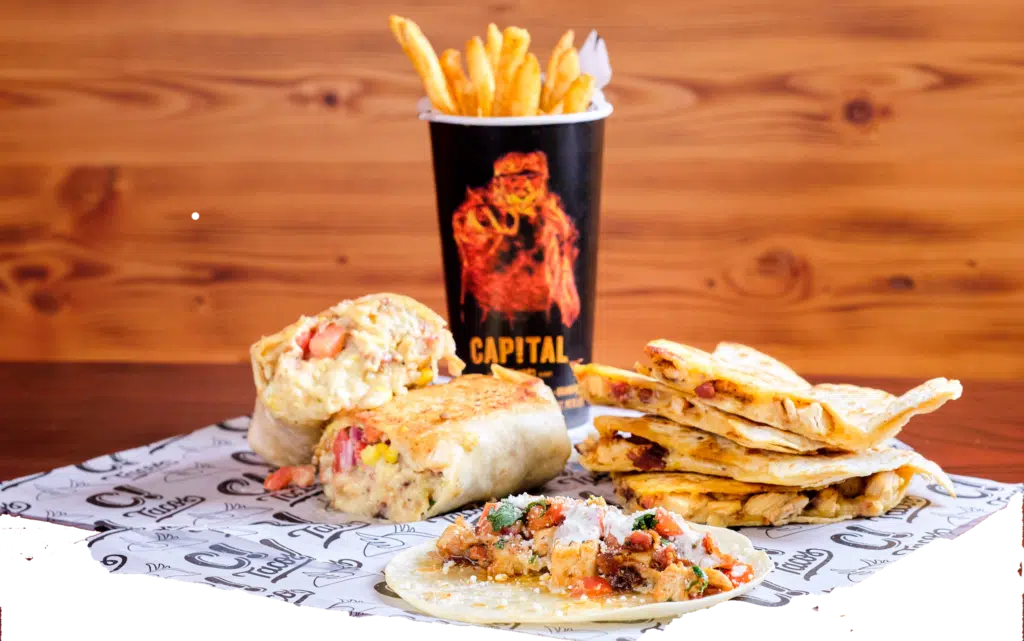
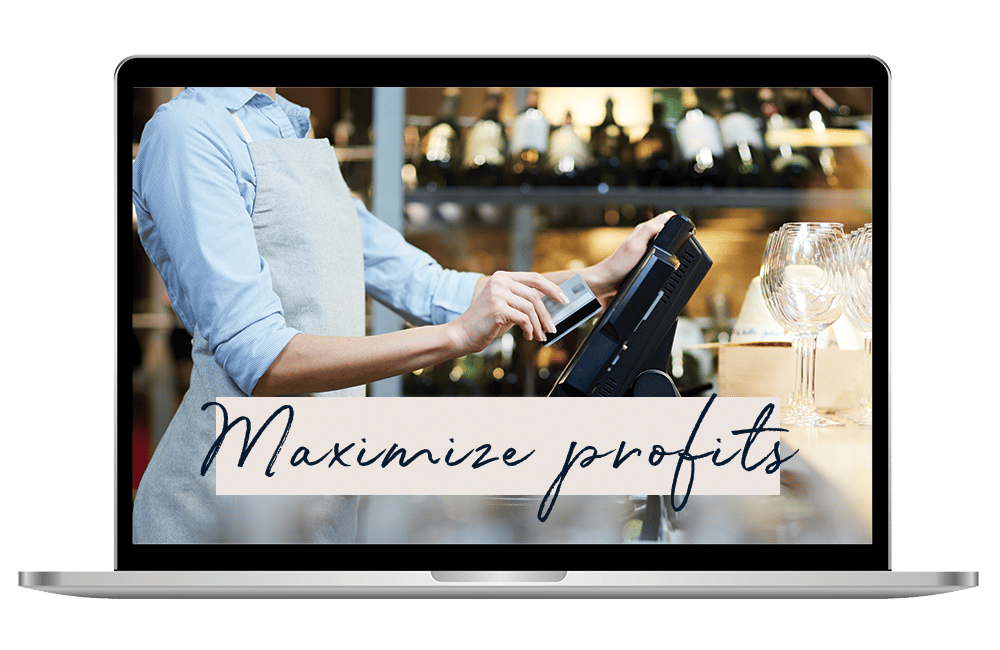
The three costly mistakes you could unknowingly be making?
Find out in this FREE guide and restaurant assessment specifically designed to reveal the unexpected hurdles standing between you and exponential business growth.
Thank You To Our Sponsors
Did You Know That 7 out of 10 Adults Dine Out To Celebrate Birthdays?
You Can Easily Capture This Lucrative Business!
For a limited time only, popmenu is offering our listeners $100 off your first month plus an unchanging lifetime rate.
Request a DEMO:
Want to become a podcast sponsor?
Please get in touch with Roger at roger@restaurantrockstars.com
